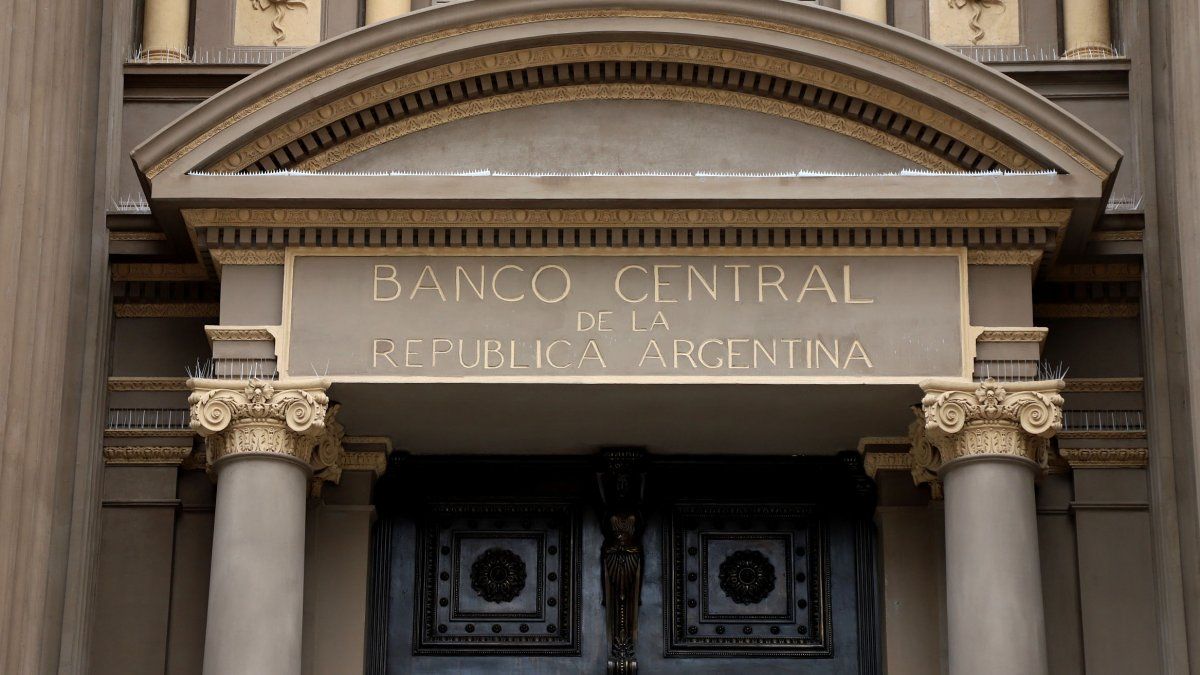From then on, it will launch the second stage: almost immediately, you will begin bidding for the series 2 and 3, which will have differentiated characteristics. Although they offer shorter cancellation periods for companies (urged to regain access to inputs to produce) that subscribe to them, They will not have tax benefits or access to the official dollar similar to those of the first series that expire on the 31st. As Ámbito learned, the BCRA confirmed that new “sweeteners” will not be renewed or launched. What firms is the Government betting on now? With the shadow of dollarization, what risks do analysts point out?
Last Thursday, in the fifth placement of Bopreal, the entity chaired by Santiago Bausili awarded US$2,454 million to 690 companies, which implied the largest amount and the largest participation so far. It happened after four weeks of little appetite on the part of importers due to the reluctance of their suppliers to accept the bonus and a financial equation that was not completely convincing. What happened? The expansion of the gap exchange rate up to the 60% zone and the appearance of demand for Bopreal in the Secondary market left a more attractive implicit exchange rate: Adcap calculated that companies began to access the possibility of canceling their commercial debts with a dollar between $1,220 and $1,260 against the $1,300 at which cash with settlement (CCL) operated until Wednesday, which was the route most chosen by companies to regularize the situation with their suppliers. This led to a decline in the CCL on Friday to $1,231 (gap of 49.5%).
Bopreal and dollar: the BCRA strategy for the second stage
With the sixth tender, the BCRA will seek to exhaust the remainder of US$904 million and hopes to reach the US$5,000 million scheduled for series 1, which lasts almost four years. To achieve this, the entity appealed to a set of benefits or sweeteners which later had to be expanded due to the low demand for the first tenders. Among them, exemption from paying PAIS tax, application to the payment of tax obligations, early redemption and exceptional access to the official dollar for up to a percentage of what was subscribed.
But that will change. Sweeteners expire January 31 and, as confirmed by senior BCRA sources to Ámbito after the result of the fifth auction, The decision is not to renew them nor is it planned to implement new benefits. This means that they will not be available for companies that subscribe to series 2 and 3. “Above all because they are already shorter series”, argued the source. They consider that, once the first stage is completed with the longest series, demand will flow to the other alternatives.
The second and third series will begin to be tendered in the first days of February. The date has not yet been defined. One possibility is that it will be this week, between Thursday and Friday. As this media learned, it is not the most likely. It could be for next week. Of the series 2 It will be placed up to a total amount of US$2,000 million. It is the shortest (expires in June 2025), is amortized in twelve monthly installments starting in July 2024 and does not pay interest. With an emission limit of US$3,000 million, the series 3 It matures in May 2026, amortizes in three quarterly installments starting in November 2025 and pays a dollar rate of 3% annually.
After the Government’s retreat with the fiscal package that it had sent to Congress (although it assures that it will redouble the spending adjustment to sustain the 0% financial deficit objective), for the economic team The signal that you can send to the market with the Bopreal. This bonus is the tool with which seeks to provide a way out of the swollen stock of commercial debt while using it to vacuum weights of the economy. Thus, he aims to put a ceiling on parallel dollars and pave the way to lift the exchange rate and, according to different voices, also to dollarize.
Large companies, those targeted by the BCRA
In that sense, after the last tender, the BCRA and the Ministry of Commerce announced that Access to the official exchange market will be enabled for some 10,000 MSMEs with declared debts of up to US$500,000 (80% of the total) so that they can cancel all of their commitments abroad in the next three months. Starting on February 10, they will be able to access for up to US$50,000, starting on March 10 for an additional US$100,000 and starting on April 10 for the remainder. According to the Minister of Economy, Luis Caputo, this will involve the BCRA allocating about US$1.2 billion of the reserves.
This represents only 2.8% of the total stock of net debt of importers registered in the registry prepared by the Ministry of Commerce and the AFIP. The US$42.6 billion finally surveyed implies a total volume that is US$15.2 billion lower than initially estimated by the BCRA. If what has already been channeled through series 1 of Bopreal (US$4,096 million) is included, around 88% still remains to be cleared.
In February, the Central aims to place another US$5,000 million between series 2 and 3. To try to achieve this, The economic team will seek to seduce large companies to enter the next auctions, just as it did in January with American companies and automotive firms. Although in series 2 SMEs with commercial debts exceeding $500,000 will have priority, the result will depend on the large ones. This is how an official source with direct influence in its implementation explained it: “80% of SMEs gain direct access starting in February. With which, If Series 2 and 3 react with someone, it is expected that it will include more companies outside the SME category.”
The truth is that, for SMEs, Bopreal was a complex tool and there were difficulties in getting their foreign suppliers to accept it.
Caputo Bausilis IMF.jpeg
Doubts about the post-summer strategy
In principle, the idea prevails in the market that series 1 will be completed this week without major difficulties. It remains to be seen what attitude companies take with the new series. All in all, if the BCRA manages to complete the US$10,000 million planned between January and February (added to the US$1,200 million that SMEs will access), there will still be US$31,400 million of outstanding commercial debt. of resolution. However, the Central Bank assures that the usual load of commercial debt for imports ranges around US$29,000 million (average for 2017-2021, prior to the moment of greatest increase in the stock as a result of exchange restrictions).
In this scenario, the officials consulted by Ámbito affirm that The strategy for when the three series of Bopreal are sold out has not yet been resolved. That is, if there will be more placements of these bonds (new series or reopenings) or if there will be a direct relaxation of the stocks from the beginning of the thick harvest (closer to April). “We’ll see when we get there. “These are moments of regime transition,” said one of the sources..
Dollarization and Bopreal
In relation to the regime transition, there are voices that point to the tool of Bopreal as a first step towards the objective of dollarization of the economy. Dollarization was the main campaign banner of Javier Milei and this Friday it was ratified as a horizon by Caputo. The minister’s words came after the President said in an interview with Colombian journalist Patricia Janiot that is “very close to dollarizing”although he pointed out that in order to do so it is necessary to first “clean up” all the remunerated liabilities of the Central Bank.
The person who warned about the role of Bopreal in this Government strategy was the former Minister of Economy Martin Guzman. Weeks ago, on Radio Con Vos he stated that “This Government has already begun dollarization” and linked it to the issuance of the bonus for importers: “It is a set of operations to convert the remunerated liability of the Central Bank in pesos into a liability in dollars.”
In dialogue with Ambit, Ramiro Tosiformer Undersecretary of Financing and current director of the consulting firm Suramericana Visión (founded by Guzmán), argued it like this: “By ‘dollarizing’ a no small part of the remunerated liabilities of the BCRA (Pases, formerly Leliq) the value of the ‘equilibrium or conversion’ exchange rate decreases to think ahead about dollarization of the economy.”
For Guzmán, “if one wanted to bankrupt the Central Bank, one has to do what is being done.” “The Central Bank has never issued debt in dollars, because it does not issue dollars. Its liabilities are in the currency it issues. It can have inflationary effects. “But it does not go bankrupt. Now, for the first time, we have debt from the Central Bank in dollars. What happens if tomorrow it does not have the dollars to pay the debt? It is a new situation in Argentina. And there is no serious country that dollarizes.” , held.
Guzmán’s (and countless economists’) warning about the risks of a dollarization process has as one of its central axes the restrictions on monetary policy that it would imply, by making it impossible to apply countercyclical measures to boost growth or mitigate recessions. , since the one that would govern monetary policy would be the United States Federal Reserve.
According to Tosi, dollarization is not the only risk associated with Bopreal. On the one hand, although it can help “contain the gap as long as it is more convenient for the importer to subscribe and subsequently sell the Bopreal against CCL versus acquiring with pesos the dollars owed for commercial debt in the CCL market,” it also puts a kind of floor on the exchange spread when it is observed that “a low level of gap has not helped in the first tenders” for the bond. On the other hand, by enabling the use of a good part of the initial series to pay taxes with the AFIP, this “may have no minor effects on the fiscal trajectory of the Treasury in the months that investors decide to make use of this option.”
Source: Ambito




